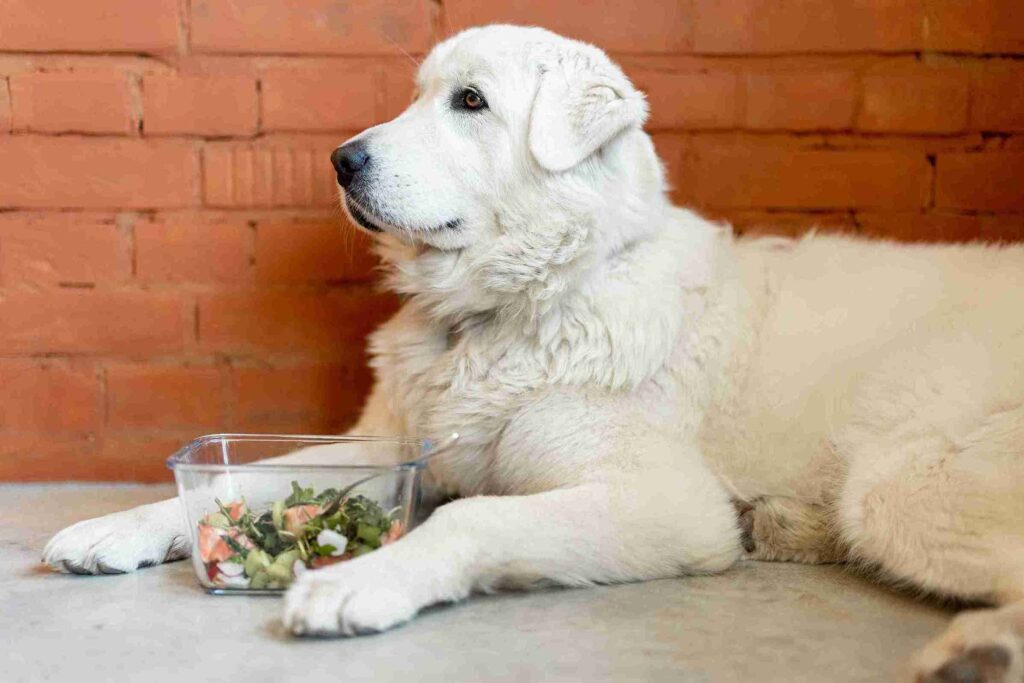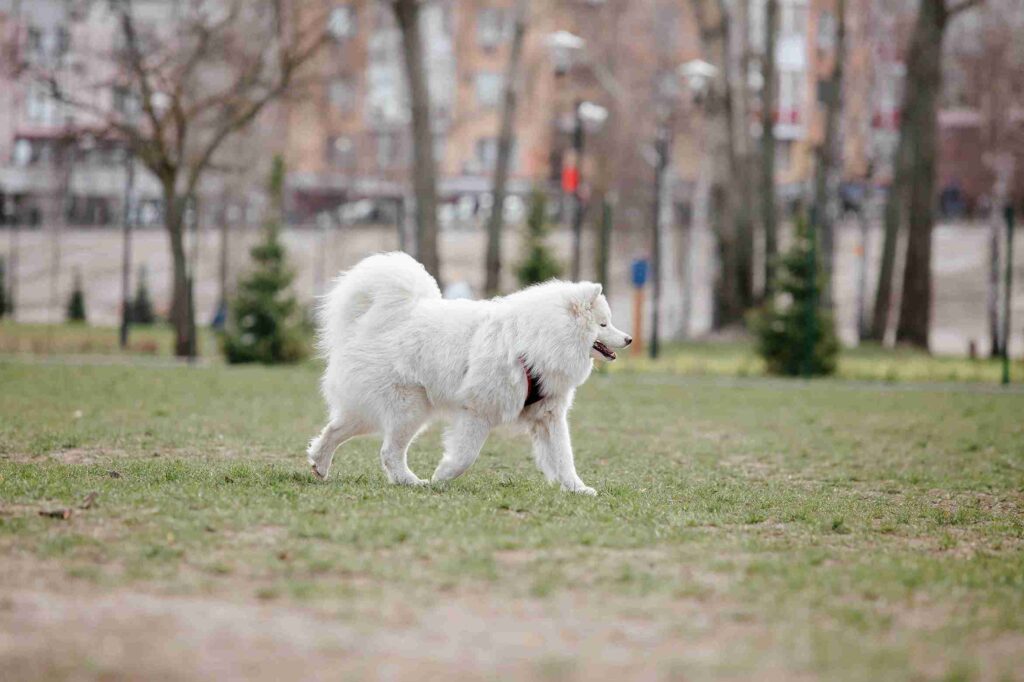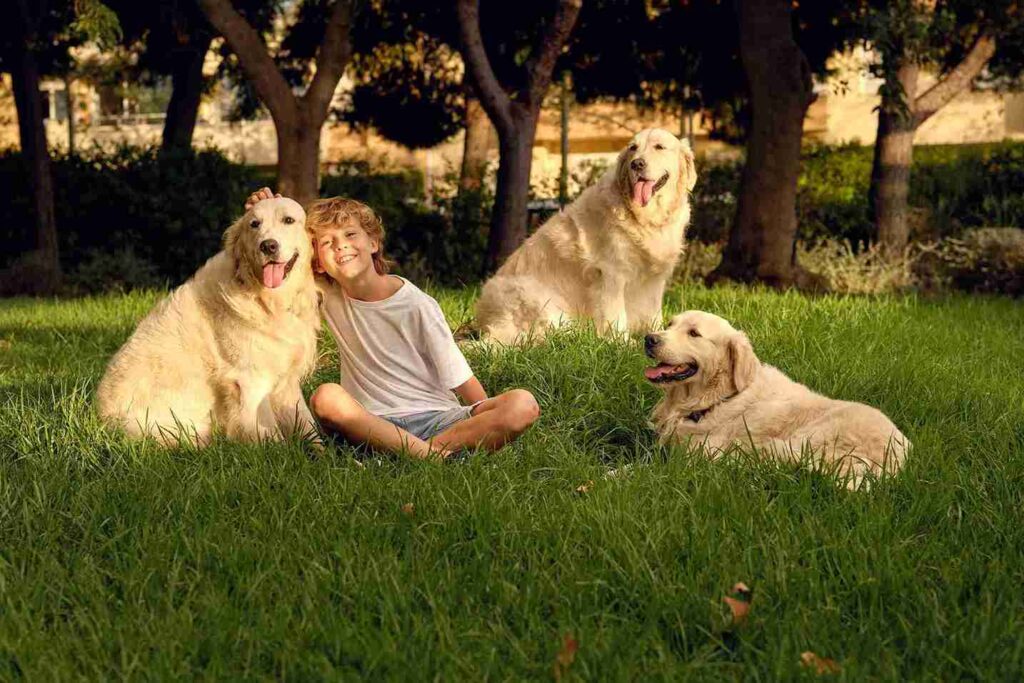So, if you happen to own a white Golden Retriever, you might be aware of their wonderful breed: friendly, intelligent, and always up for playtime. However, like any other breed, they need to undergo thorough training to become well-behaved and well-adjusted dogs. This guide will be beneficial not only for people who have recently acquired a White Golden Retriever but also for those who used to have this kind of dog and have basic experience in training them. Introducing your pet to basic training and more complex instructions will be easier once you read through this guide, which covers the stages of potty training and more.

Imagining why training is crucial for white golden Retrievers
White Golden Retriever training isn’t just about teaching your calotype to follow commands; it’s about developing rapport built on compliance. Golden Retrievers are active, intelligent, and obedient, making them some of the best study companions. But training is not so easy; it depends on patience, determination, and, most of all, the training given.
White Golden Retrievers like any other Golden Retriever, are rather active and full of life. If not trained appropriately, they will be full of energy, which can transform into chaos. Appropriate training enables one to prevent their exuberance while at the same time making them friendly, polite, and obedient dogs that are capable of getting along with all members of the family, other domestic animals, and even strangers.
A guide to kicking off the training of your White Golden Retriever
The first step when training a white Golden Retriever is important. As I said training of puppies, especially little ones, need structure in their lives.
1. Socialization: The First Step in the Training Process
It should start as early as possible; it is said that the early bird catches the worm. Socializing the white Golden Retriever dog is very important; ensure your white golden retriever is exposed to different environments, sounds, people, and other animals. Childhood socialization reduces phobia and anxiety in future life. It also helps your dog become friendly, confident, and calm when approaching new situations or meeting new people. You can take puppies to friendly places like parks and interact with other animals and people so that when they grow up, they may be well-mannered.
training of white golden retriever
2. Crate Training: Building Positive Habits
Crate training is among the most useful methods for training these white Golden Retrievers. A crate gives your dog a special area where it can lie down and sleep confidently, that knowing look that it is now a safe place to be when it is tired. Under the same category, crates can also serve as a way of housetraining puppies since they are unlikely to want to defecate in the area they sleep in. This method allows the pet to be in a clean environment and adopt some routines.
Put food, toys, or warm and soft beds inside the crate to make the puppies want to get in. Don’t train the crate as a punishment tool, which will give it a negative connotation. Over time, your puppy will learn that the crate is a comfortable and quiet place.
3. Potty Training: The designation of bathroom routines
Another important aspect of training white Golden Retrievers is how to help the puppy learn to use the washroom correctly. Puppies require at least 2 to 3-hour intervals between waking up or being fed, taking a nap, playing, going out, and dedefecatingConsistency is key. Both you and your puppy must go out at the usual time and reward them when they go out to defecate. Please do not punish the child when they have had an accident; instead, wipe the area and lead them to the right place should they fall again.
4. Basic Obedience Commands: Sit, Stay, Come
After your white Golden Retriever has understood its surroundings and schedules, it is ready for basic obedience lessons. These commands form the basis of further commands used during training and are crucial to safety.
- Sit: Place a treat on the side of your dog’s nose and slowly move the treat away from the dog’s face in an arc. As the head follows the treat, the dog’s bottom will automatically fall to the ground. As soon as your dog sits down, say, “Sit.” The moment they follow this command, reward them.
- Stay: Lay your dog down, wave your palm towards them, and say, “Stay.” When they sit, wait a moment, and if they remain seated, give them a Jakeball. Slowly raise the parameters with time and distance, progressing from one gear to the next.
- Come: This command is very important for your dog’s welfare. Begin with the proper enthusiasm, saying their name, and then follow it up with the word ‘come.’ Praise and treat them when they come to you, cheering them on.
The following concern training features are more sophisticated than the basic training and target White Golden Retrievers Breed only.
How to Train White Golden Retrievers
Stay Consistent: Maintaining proper consistency in the training programs is another major consideration. First, decide on your approach and rules and do not change them for any reason. In training your dog to sit down or even to potty train, repetition is probably the key to getting results quickly.
- Keep Training Sessions Short and Fun: White Golden Retrievers are intelligent and love to learn, but they do not like boring activities and, thus, long, unbroken training sessions. Whenever you provide training, make sure it is brief—about 10- 15 minutes—and fun. To encourage your dog, you should use positive reinforcement and shower him with praise.
- Patience Is Key: Training is not an event but a process that may require significant time to affect all dogs in the way that is supposed to happen. Dogs show positive signs when taught in a good and positive environment, and your patience will surely be rewarded.

Some of the Most Common Questions
Q1: How long does training a white golden retriever take?
Training sessions depend on the sire’s age, the dog’s temperament, and experience. In general, puppies grasp control commands and other instructions after a few weeks.
Q2: Can I train this white Golden Retriever on my own, or do I have to call a professional?
White Golden Retrievers are intelligent, like any other color, and thus, easily trainable. Training a dog is not a complex task when properly guided, and it is not very difficult if you do it all by yourself. However, if you experience some problems or want to receive more complex instructions, a professional trainer can be
Q3: Do owners of white Golden Retrievers need crate training?
It gives them a familiar environment, enables them to learn house training, and deals with separation issues. Crate training is suitable regardless of whether you have a puppy or an adult dog.
Q4: What other behavioral problems are associated with white golden retrievers?
White golden retrievers are very good-natured and mostly easy to train, but some of the behaviors that may be troublesome include separation anxiety, chewing, barking, and jumping.
Q5: How can I prevent my white Golden Retriever from pulling on a leash?
When your dog pulls, sit down, wait until your canine comes beside you, and then resume the walk. Never pull the leash for the dog and/or the other way around because this causes frustration.
Conclusion
Socializing white Golden Retrievers is not a one-time affair; it takes time, sincere effort, and commitment but is rewarding. Below are some of the key features of these dogs. They are intelligent, healthy, and highly trainable dogs. Whether your white Golden Retriever is crate trained, house trained, or even trained to follow more complex obedience commands, developing this Structured training plan will help him become a happy and obedient family member. Only positive reinforcement, such as being patient and consistent, creates a solid relationship with the dog, which will remain with him throughout his life.




